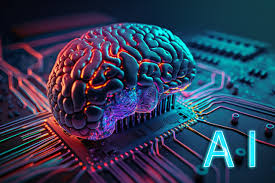
Artificial Intelligence (AI) is rapidly transforming the way we learn, live, and interact with the world around us. For students, AI represents a revolutionary tool that can enhance learning, foster creativity, and prepare them for an increasingly technology-driven future. In this article, we’ll explore the future benefits of artificial intelligence for students and how this cutting-edge technology is set to reshape education.
Personalized Learning Experiences
One of the most promising aspects of AI in education is its ability to tailor learning experiences to individual students. With AI-powered platforms, students can receive customized lessons that match their unique pace, style, and needs. For instance, if a student struggles with a specific math concept, an AI system can identify the gap and provide additional resources or practice problems. This personalized approach ensures no student is left behind while encouraging those who excel to move forward at their own pace.
Efficient Study Tools
AI-driven applications, like smart note-taking and summarization tools, are becoming indispensable for students. These tools can analyze lengthy textbooks or lecture notes and generate concise summaries, saving time and improving comprehension. Virtual tutors powered by AI can answer questions, clarify doubts, and even simulate interactive quizzes, making studying more engaging and effective.
Enhanced Accessibility
For students with disabilities, AI opens up a world of possibilities. Speech-to-text software, real-time transcription, and AI-driven sign language interpreters can bridge communication gaps. Visual impairment tools like screen readers and braille converters powered by AI ensure that learning materials are accessible to everyone, making education inclusive.
Smarter Career Guidance
Choosing a career path can be daunting, but AI is poised to simplify this process. AI tools can analyze a student's interests, strengths, and performance to suggest potential career paths. Additionally, these tools can recommend courses, internships, or skill-building activities aligned with the student's goals, helping them make informed decisions about their future.
Real-Time Feedback
Traditionally, students have had to wait days or even weeks to receive feedback on their assignments. AI systems can provide instant feedback, pinpointing errors and suggesting corrections in real time. This immediate response allows students to learn from their mistakes more effectively and improve their skills continuously.
Gamified Learning
AI has the potential to make education more engaging through gamification. By integrating game-like elements into learning platforms, AI can turn mundane lessons into exciting challenges. Students are rewarded with badges, points, or other incentives for completing tasks, which motivates them to stay focused and enthusiastic about their studies.
Lifelong Learning Opportunities
The learning process doesn’t stop at graduation. AI-driven platforms enable students to continue acquiring new skills throughout their lives. From coding tutorials to language learning apps, AI-powered tools provide flexible, affordable, and on-demand education for individuals of all ages.
Future-Ready Skills
As AI becomes more integrated into everyday life, understanding and working with this technology will be crucial. By introducing AI concepts and tools into classrooms, students can develop skills like data analysis, problem-solving, and critical thinking. These skills not only prepare them for future jobs but also equip them to thrive in an AI-driven society.
Conclusion
The future benefits of artificial intelligence for students are immense and transformative. From personalized learning and instant feedback to accessibility and career guidance, AI is set to revolutionize education in ways we are only beginning to understand. By embracing AI, students can unlock new opportunities, overcome challenges, and prepare themselves for a future where technology and innovation play a central role. The integration of AI in education isn't just about adapting to the future—it’s about shaping it.

0 Comments
Post Comment